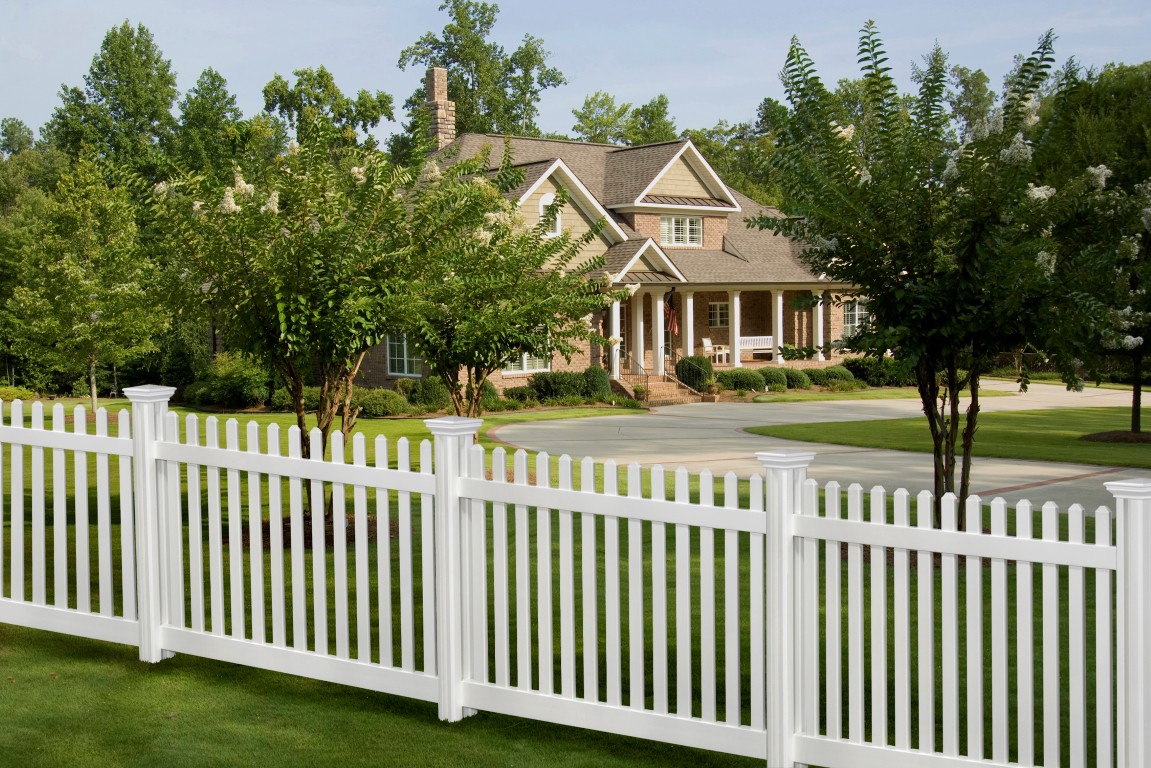When deciding whether or not you want to build a fence, a significant factor is going to be how much the fence costs. While the exact pricing of fencing and fence installation will widely vary, you can still get a general idea of which factors are going to increase or decrease the cost of a fence.
With Fencing Direct, we have a Fence Builder that can help you get a more specific price of a fence. However, we want to discuss the various factors that may influence your decision. From materials, to processing, to safety and labor costs, to installation costs, many different pieces will affect fence pricing.
Materials Cost
The main cost for fencing is going to come from the materials cost. The most expensive fencing material is wood because of supply chain disruptions. We are still seeing the effects of the pandemic that started in 2020, with homeowners making rapid expansions to their homes, coupled with labor shortages. The combination caused rapid supply chain shortages, where there was really high demand but significantly lower supply. According to the Thomas Index Report in 2021, the demand for wood fences has gone up 274% and the demand for chain link fencing has gone up 153%. Iron and steel fence demand has gone up 400%, and vinyl fence demand has gone up 450%. These factors are what have contributed to the increased cost of materials for fencing.
Furthermore, outside of the factors due to the pandemic, steel is very pricey. Steel is used for chain link fences, but the steel required is a refined metal, not a raw ore. This extra processing step adds to the cost of the chain link fence. We see a similar reason when looking at vinyl fencing. There is an additional cost to gluing together vinyl panels to build the fence. Vinyl fence materials also fluctuate with the cost of metal because vinyl fences have aluminum in the fencing to make it stronger. Furthermore, when we consider the extra time and effort for processing, we must also consider that there is a percentage of materials that are lost during processing, which manufacturers must factor into the cost that is passed on to you, the customer.
Overhead Manufacturing
Incorporated in the cost of materials and manufacturing is safety costs, labeling costs, and wood for shipping materials. Involved in overhead costs for the manufacturer is the cost to ensure that the work environment and the materials are safe to work with for employers. Labeling costs are also incorporated because the manufacturer needs to make sure that you are getting the correct material and items. To ship material, there are associated costs with safely and securely packaging the items so that they arrive at your home in one piece.
Fence Size
Second, the size of the fence factors into the cost of the fence. A bigger fence means a bigger price tag, as more material is necessary to build the fence. Fencing Direct’s Fence Builder software can help you to find the sweet spot for the size and the budget of your fence that will both work for you.
Shipping Costs
A third factor you should consider is where you live compared to the supplier and manufacturer. Shipping costs have a positive correlation with distance from the manufacturer. So, the further you live from the manufacturer, the more the shipping costs, which adds to the cost of the fence.
Labor Costs
The next item you should consider is who is doing the installation. If you are a handy individual, you might be able to do the fence installation on your own. In that case, you must consider the time you will be spending to build the fence. Your time may or may not be a monetary cost, but it is still an associated cost! Doing the installation yourself is obviously cheaper, but you can also hire a crew to get the job done faster. It will be quicker for a crew to do the installation because there are more people working on installing the fence and they are professionals. However, that means you will be paying for the craftsman’s time and energy, which will add into the cost of the fence.
Fence Design
A fifth factor is the design of the fence. If you are looking to create and install a simple fence with a simple design, then you can keep the cost of your fence lower. If you decide you want a gate in your fence, the cost of your fence will increase because the gates are pre-welded, which falls under manufacturing and processing costs. Gates also have more reinforcements and mechanical pieces, such as pool latches, which have magnetic components that are expensive to create and install. When manufacturing these specific parts of the fence, the manufacturer needs to ensure safety of everyone involved, in both manufacturing and use.
If you choose to elevate the look of your fence, you may consider adding designs. You can make the posts, rails, and pickets fancier. Perhaps you want to add an extra rail to your fence. That will be extra material and labor costs. If you choose to make the head of your post fancier, with some kind of design, that will increase the manufacturing costs. If you want the fence painted a specific color that is not natural, that will also contribute to an increased cost of the fencing. If you are looking for a very ornate fence, you could get custom wrought iron work done on a fence or driveway gate, and that will substantially increase the cost of the fence.
Overall, there are a lot of different factors that contribute to the cost of a fence. When designing your fence, you should keep these factors in mind, so you can weigh out the best decision for you and your family. We, at Fencing Direct, can help you talk through these decisions. You can also use our online Fence Builder to begin pricing out some options!





